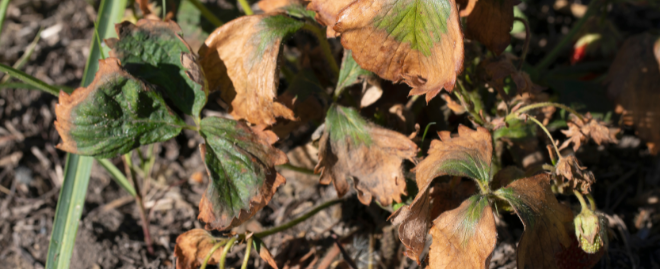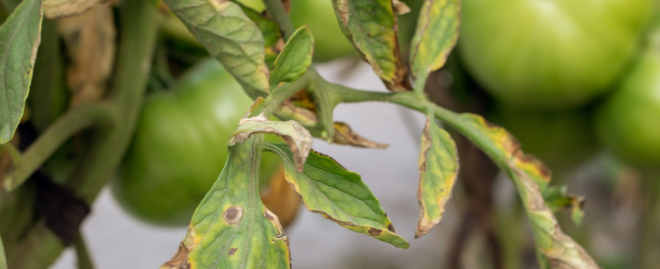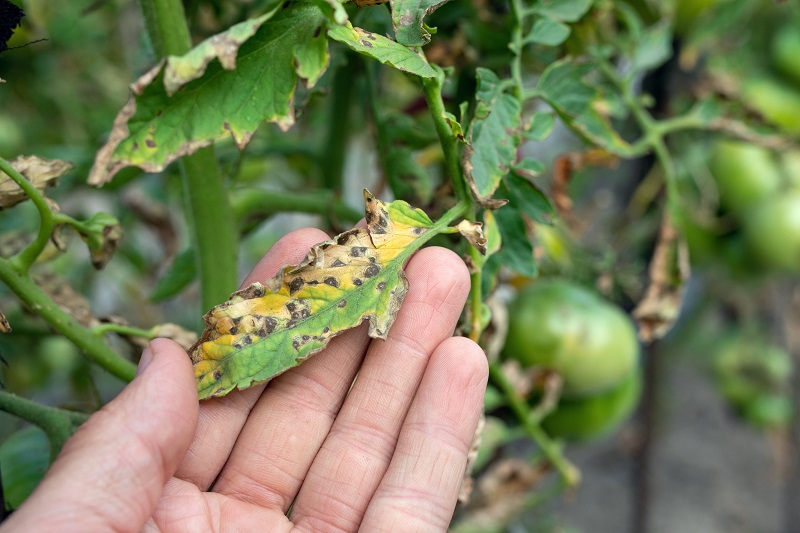What is Fusarium Mold
Fusarium mold is a genus of fungi most commonly found in soil or on plants. Most species of fusarium are harmless but some have the potential to cause skin irritation, allergies, and eye infections.
Although fusarium is primarily found on plant life, it’s abundance in nature makes it a common form of mold growth in residences.
Fusarium mold can enter your home via moldy food, indoor plants, or spores carried through the air.
If the environment is just right, the spores will form colonies and visible growth on surfaces in the home. They can form on drywall, behind wallpaper, under carpeting, and elsewhere throughout the home.
When fusarium mold is left to spread, it can eat away at these structural surfaces and cause extensive damage over time. Fusarium mold can even cause respiratory issues in occupants of the building if mold abatement services are not performed in time.
If conditions are humid inside the home, or if there has been an untreated event of water damage, fusarium mold will be more likely to spread due to the increased moisture levels.
Is Fusarium Mold dangerous
Fusarium is the largest genus in the Tuberculariaceae, which is parasitic on many crops, fruit trees, and vegetables. The filling of the wood veins will interfere with the water transport process, causing the plant to wilt. Fusarium also produces a number of toxins secreted into the host circuit that can also cause wilting and attack many plant species.

Is Fusarium Mold dangerous
The following are a few species of Fusarium that cause leaf wilt: F. udum (on Cajanus cajan), F.oxysporum bv. licopersici (on Lycospersicon esculentum tomato), F. lini (on flax Linum usitatissimum) F. solani (on potato Solanum tuberosum) and F. orthaceras (on Cicer arietium).
Fusarium wilt is a plant disease caused by the fungus Fusarium oxysporum. It is a host-specific disease. It is also a warmer weather disease. Fusarium is a fungus that lives in the soil. It penetrates plant roots and penetrates vascular tissues, especially xylem tissues. Fusarium wilt exhibits similar symptoms to verticillium wilt. As a result, common symptoms include wilting, death, and characteristic vascular staining. Seedlings are infected with wilt and die quickly from Fusarium wilt. Fusarium wilt can be found in economically important crop varieties including sweet potatoes, tomatoes, legumes, melons, and bananas.
In general, control of Fusarium wilt disease can be accomplished by improving soil conditions, planting disease-resistant varieties, removing infected plant tissues, using clean seeds, and using soil and fungicides.
What is the difference between Fusarium and Verticillium Wilt?

What is the difference between Fusarium and Verticillium Wilt
Fusarium wilt and verticillium wilt are two wilt diseases that cause similar symptoms. However, Fusarium wilt is caused by Fusarium species of fungi while verticillium wilt is caused by several Verticillium species. This is the key difference between Fusarium and verticillium wilt. Fusarium wilt is a host-specific disease while verticillium wilt has a broader host range.
- Fusarium wilt and verticillium wilt are two fungal diseases affecting economically important crops.
- Both types of pathogens are soil-borne fungi. They cause vascular wilt disease.
- Fusarium and verticillium infect plants through their root systems.
- They penetrate the vascular tissues and disrupt water transport through the xylem.
- Both diseases have similar symptoms such as yellowing leaves, wilting and wilting, stunting, cracked bark, and dead branches or branches.
- These fungi produce microscopic spores or resting structures. Therefore, they can survive in the soil for many years.
Contact Us for Mold Remediation of all Types of Mold
ServiceMaster of San Francisco/San Mateo provides IICRC-certified mold removal services.
Our mold specialists are available 24/7 at (800) 439-8833 in the San Francisco, San Mateo, CA and Palo Alto, CA areas to respond to cases of mold remediation. We work with all insurance providers and assist you with claims as needed.

Mold Remediation Professional
Other Related Mold Removal Topics:
How to Remove White Water Mold from Pools and Hot Tubs
What to Do When There is White Mold in the Attic
How to Remove White Water Mold from Pools and Hot Tubs
How to Prevent Mold and Remove it from Grout Surfaces

Steve VanDenBerg is the owner of ServiceMaster Disaster Restoration and Recovery. He has over 30 years of experience working within the restoration industry and successfully leading start-ups, turnarounds, acquisitions and mergers, and rapidly growing companies.
Steve earned his BS in Business & Accounting from Calvin University in Grand Rapids, MI and began working for DSI Holdings as their Chief Financial Officer. When Steve began with DSI Holdings, they were running an underperforming ServiceMaster Restore franchise with one location. Steve implemented new policies and procedures for accounting and finance as well as a professional sales plan that increased profits eightfold over his time as the CFO. He was then promoted to President and CEO and in this time, he expanded the company from two locations with $4M in sales to 12 locations and $45M in sales. DSI Holdings became one of the largest disaster restoration companies in the U.S. and helped with major restoration projects throughout the U.S. and around the world.
Steve purchased ServiceMaster DRR in 2015 when the business was in decline. Drawing on his years of experience in turning around struggling ServiceMaster franchises, Steve overhauled our operations, including finance, sales, and marketing, which led to a quick turnaround. Within Steve’s first 24 months, sales increased by 60 percent. Steve also helped greatly improve our operating margins and established a relationship with California’s largest residential insurance company. Under Steve’s leadership, we have become one of the largest disaster restoration providers in California.
Steve has found great success in turning around struggling and stagnant restoration franchises by changing the business model and strategy, greatly increasing sales and profits. Many of the changes he has implemented have even been adopted by the franchisor into their operating model.



